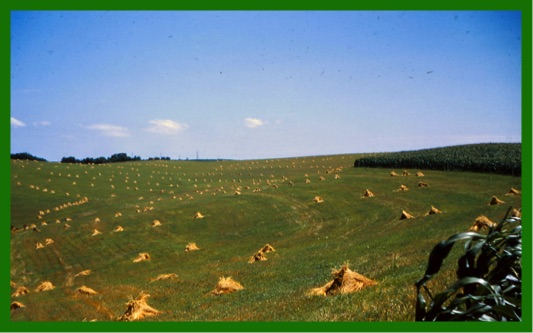
Then God said, "Let the land produce vegetation: seed-bearing plants and trees on the land that bear fruit with seed in it, according to their various kinds." And it was so. (NIV) (Genesis: 1:11)
VIEWS OF A FARM BOY
I have been going through some packed away things during these cold winter months and I found some old slides from the 50's (actually I didn't even remember I had them.) I converted the slides to digital and I want to share them with you. I graduated from Anthon High School in 1951. I served in the U.S. Army for two years, came home and farmed for a few years before starting to college. Of course, I never miss an opportunity to talk about farming in Iowa. So this month, I will show you some pictures and tell you some stories about "Farming in the Fifties."
During this era of time in Western Iowa most farmers planted corn, oats and hay. We did not raise any soybeans while I was farming. The focus on soil conservation was just beginning to enter the picture. However, we contour farmed where possible to decrease soil erosion. Right: The oats have been cut with a binder, shocked by hand and left in the field to dry until thrashing day. This was the end of an era, the thrashing machine was about to become obsolete as the combine entered the picture.
What's this? It is a rotary hoe. It was the first step in the cultivating process. The spiked wheels would destroy the small weeds without damaging the young corn plants. It would also loosen the crusted soil to allow any remaining corn or soybean seeds to pop through the ground. One more thing--this was a fun process as it worked best when you traveled at a high speed!
Spring is here and time for field work to begin. In the fifties planting corn was a multi stage project. The first step in soil preparation was plowing the field. When I was a little boy my dad could not see well enough to drive a tractor. He farmed with horses and did all of this work with a single bottomed plow "horse powered" by Dick and Prince. He bought a small tractor when my brother was old enough to drive it. When my brother left for the army I learned to drive the tractor at a very young age. Now my turn--I spent two years in the army after high school. After returning from the army I wasn't sure just where my career path was heading, so I went back to the farm. Here I am with a John Deere A and a two bottom plow. An exciting time--soon the new crop would be in the ground.
My view for the month: I grew up on a farm and I did farm work chores beginning at a very young age. But "Farming in the Fifties" covers a 4 year period when I was an actIve farmer. In 1956, I sold my machinery to my brother and enrolled at the College of Pharmacy in Iowa City. During my early working years, I saved my money thinking I was going to buy a pharmacy in a small Iowa town. However, I loved my job at Harder Pharmacy in Windsor Heights and I was established in the community. My brother continued to farm and in 1970 a farm came up for sale not far from his land. That was an easy decision for me. I bought the farm and once again considered myself an Iowa farmer. During my pharmacy years, I worked with so many wonderful people and I still consider them to be a very valuable part of my life. But I had a duel career--pharmacy and farming. I still have so many boyhood farm friends from my growing up years, as well as having the opportunity to work with some great farmers throughout the years. All of this makes me thankful my commitment to Iowa agriculture didn't stop with "Farming in the Fifties." It has been such a privilege for me to be a small part of Iowa agriculture. I am so thankful for all of our Iowa farmers who are so dedicated to providing food for so many hungry people in so many nations around the world.
I raised corn and oats when I farmed, but my dad kept his pigs and milk cows. This sow has many mouths to feed--as I recall it was a litter of 17.
Corn planting. The time has arrived--the seed will soon be in the ground. My dad had a horse drawn two row planter (see seat) that we put to good use. My brother, Wally, and I never missed a farm auction so we bought another similar planter and took it to the Anthon Welding Shop. Herb Schwartz welded them together transforming them into this magnificent machine that would plant four rows a a time!
Above: My brother with his new red wagon.
Right: Harvest has been completed and the corn has been shelled. I am hand loading it to the grain elevator that transports it to the bin where it is stored to feed the animals during the winter months.
Left: This was one of my favorite jobs--cultivating the corn. I kept my fields clean. Look! Do you see any weeds?
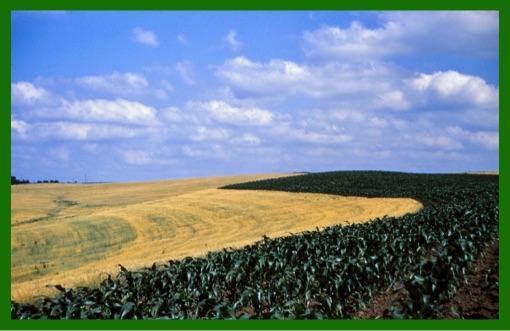
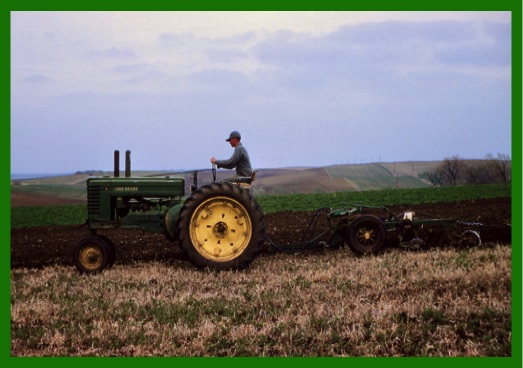
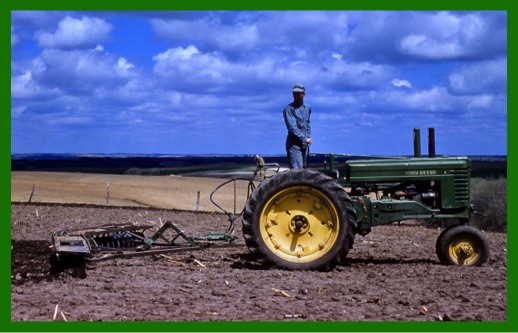
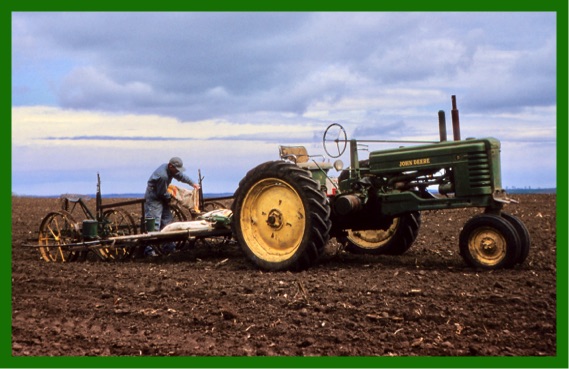
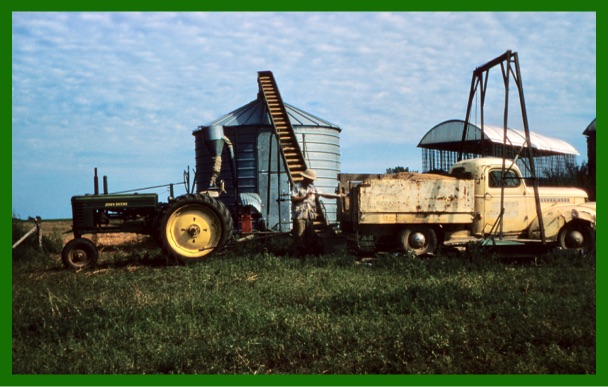
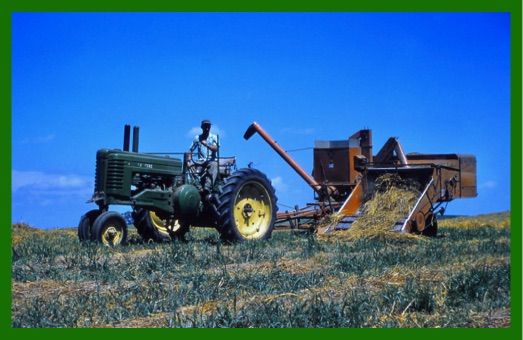
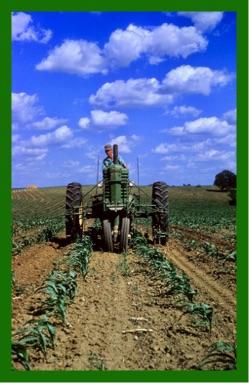
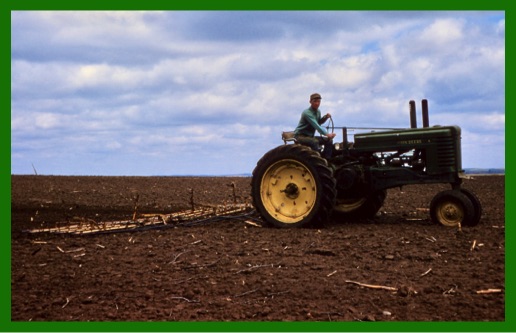
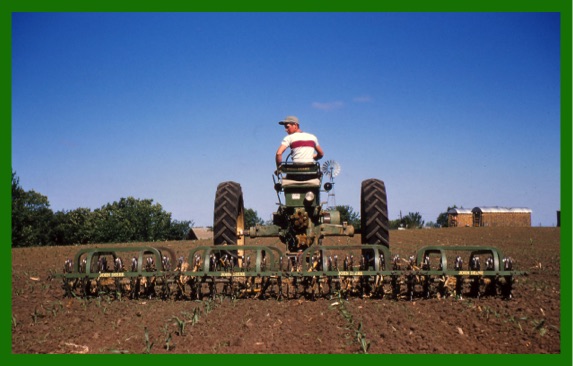
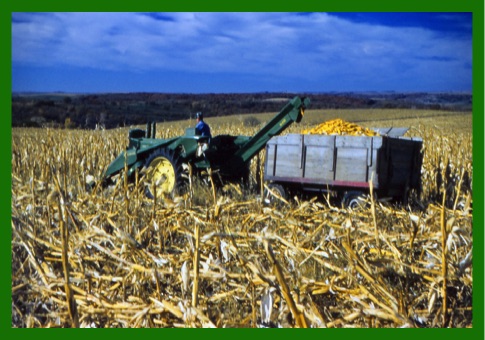
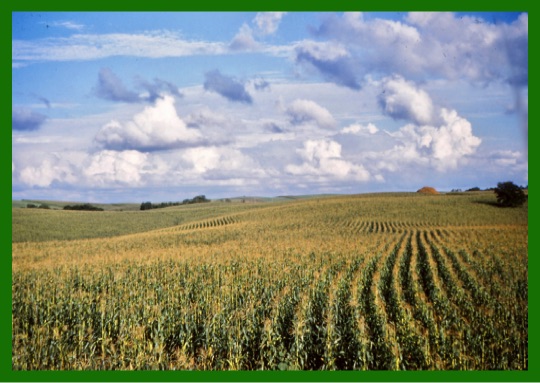
Right: This is a late summer scene. The corn has tasseled and it will soon be harvest time. If you look to the right skyline you can see a hay stack. The oats had been thrashed and the straw stacked for winter use as feed for the horses and animal bedding.
Oats harvest. I believe this was the first year we transitioned from thrashing oats to using a combine.
Corn harvest: Here I am harvesting corn with a two row corn picker.
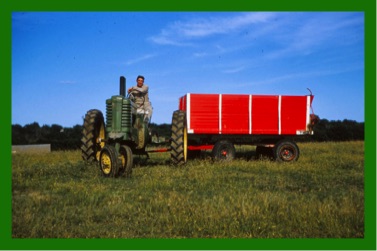
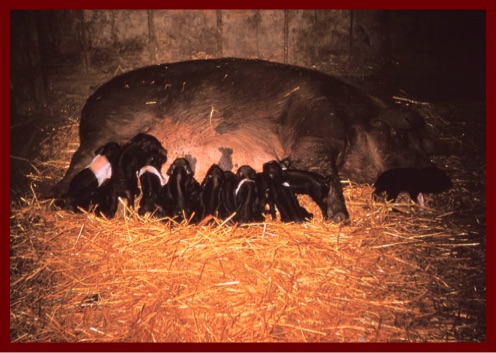
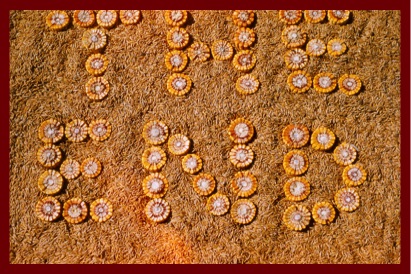
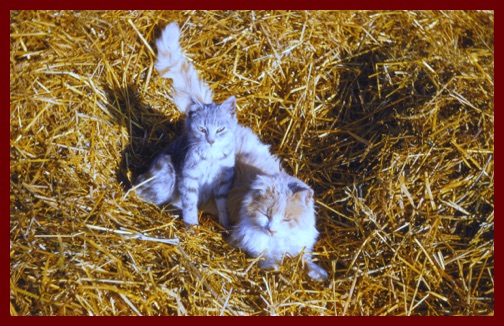
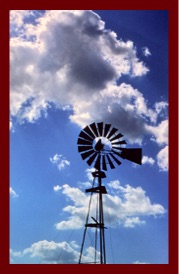
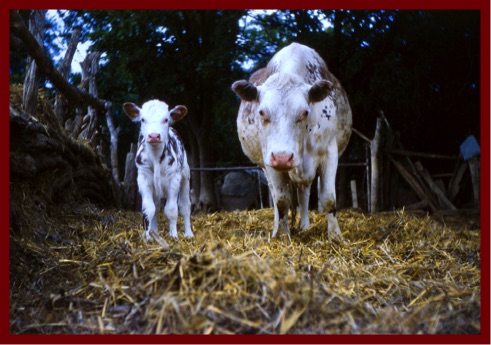
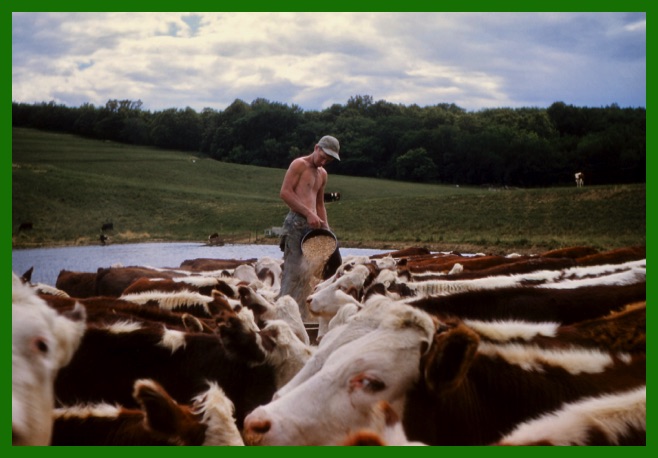
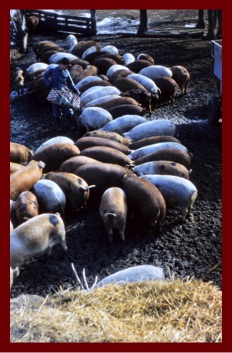
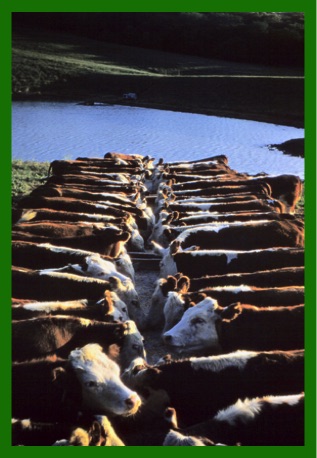

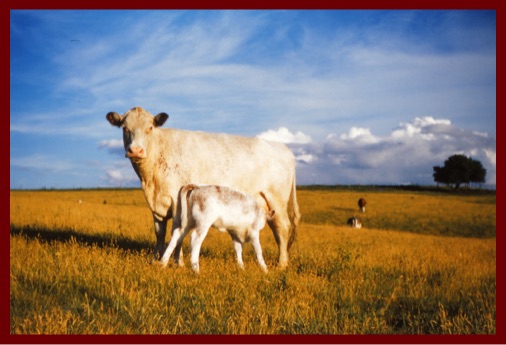
Left: Best friends!
We didn't have house pets. Our dogs and cats slept in the barn--but they ate people food (left overs from our table.)
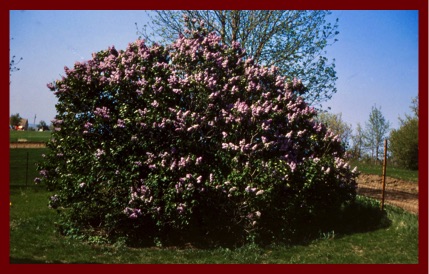
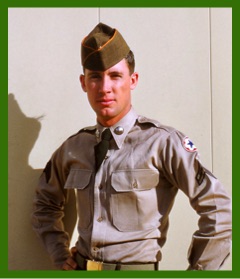
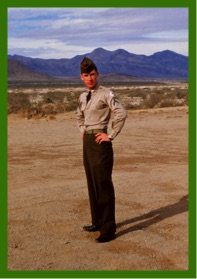
FARMING IN THE FIFTIES
Left: Now the plowing is done and the next step is disking the field to break up the clods and smooth out the soil. Right: One more step before planting. We would harrow (drag) the field before planting. Then after planting we would often drag it again to make sure the seeds were adequately covered with soil.
Below: A few more pictures from my farm days.
Cattle feeding--new to me! Some of the farmers around Anthon had cattle feedlots but we never did. It was time to try a new adventure. When I got out of the army and started farming, my brother and I rented some pasture land down by the river. We built feed troughs and bought our calves from the Sioux City Stockyards. Where did we get the money? We just went to the First Trust and Savings Bank at Anthon. We told them our plans and they said "yes" and gave us a check. No legal work--no papers to sign--the old saying was "a farmers word is as good as gold." I loved feeding the cattle, but they took a lot of work and supervision. When they were fat and ready for market we delivered them back to the Sioux City Stockyards where they were sold to the local packing plant. Farming is always a risk and grain prices were up and cattle prices were down so we didn't make much profit. But one thing you can be sure of--we paid back our bank loan and moved on.
MARCH-2018